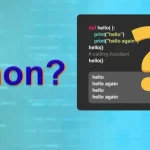These are some programming related jobs, and here are some programming languages. Which language should a beginner learn for each of these jobs? If you can’t answer this question, this video is for you. You see, every year we are bombarded with countless videos about top 5 programming languages to learn.
But choosing a programming language solely based on what’s popular is like blindly picking a path, without knowing where it leads. You might eventually reach your goals, but it would take you much longer than if you took the right path from the beginning. In the same way, picking a programming language based on your interests and career goals will help you reach them much faster.
Today, I want to tell you which programming language should you learn based on the job you want. Let’s start with game development. There are two popular game engines used in the game development industry.
Unreal Engine and Unity. If you have ever played Fortnite, it was developed using Unreal Engine. Pokemon Go which was all the rage in 2016 was made using Unity.
If you want to do game development using Unreal Engine, you’ll need to learn C++. For Unity, you’ll have to learn C Sharp. C++ is a general-purpose programming language that was developed as an extension of the C programming language.
Hence the name C++, which in programming is equal to C++1, which signifies an improvement in C language. It was designed to provide a higher-level abstraction for object-oriented programming, while retaining the efficiency and low-level performance of C. And this makes C++ very fast and a perfect candidate for graphic-heavy applications like game development. C Sharp, on the other hand, was developed by Microsoft in the early 2000s.
Original name of C Sharp was Kool, which is short for C-like object-oriented language. So C Sharp also has its origin in C. C Sharp was developed by Microsoft as a competitor to Java. So the syntax of C Sharp is very similar to Java.
Let’s move on to mobile development. There are two ways of developing mobile apps. Native development and cross-platform development.
When you build apps for a specific operating system, it’s called native mobile development. For example, you can do Android development for Android phones and iOS development for iPhones. But as you can imagine, developing separate apps for different platforms means more work and can be very expensive.
You’ll have to hire Android developers and iOS developers to build and support different versions of your app. That’s why we have a second way of developing mobile apps, which is called cross-platform development. In cross-platform development, we write code once, and it works for both Android and iOS.
Let’s talk about the languages you need to learn for native development. Kotlin was announced as preferred language for Android development by Google in 2019. Before that, Java was the most used language for Android development.
Kotlin was created as an improvement over Java. Syntax of Kotlin is very similar to Java. One of the standout features of Kotlin is its built-in null safety.
Nullable and non-nullable types are distinguished in the type system, which helps eliminate null pointer exceptions, which is a very common cause of bugs in many programming languages. Kotlin is fully interoperable with Java, which means that it can be seamlessly used alongside existing Java codebases. For iOS development, Swift is the language of choice.
Swift was created by Apple specifically to build apps for iOS. Before Swift, Objective-C was used for iOS development. But since Objective-C is a language from the 80s, it lacked several modern features.
So Apple developed Swift for better performance and interoperability with Objective-C. Moving on to cross-platform development, there are two main frameworks to discuss here. First one is React Native, which was developed by Facebook.
And the second one is Flutter, which was developed by Google. React Native allows developers to build mobile apps using React, which is a very popular JavaScript library. JavaScript is a high-level interpreted programming language primarily used for developing web apps.
We will discuss React and JavaScript in detail when we cover web development. Flutter, on the other hand, uses Dart as the programming language. Unlike JavaScript, Dart is a compiled language.
Dart offers features like just-in-time compiler for development and ahead-of-time compiler for release. This enables fast execution of Flutter applications. Let’s switch gears and talk about artificial intelligence and machine learning.
After the release of JATCPT last year, AI is all the rage right now. For AI, Python is the undisputed top choice. Like JavaScript, Python is also a high-level interpreted language.
Pandas and NumPy are the two most important Python libraries for data manipulation and analysis. Scikit-learn is the library that provides various machine learning algorithms. If you are interested in deep learning, you would want to learn TensorFlow, PyTorch, or Keras.
Moving on, let’s talk about one of the most popular domains among programmers, which is web development. Web development has two main components, front-end development and back-end development. To understand what each of these means, let’s take the example of a login page.
When you enter your username and password in these text input boxes, all of that is happening in the front-end of the website. After you hit the login button, a request is sent via the internet to a server somewhere far away. This server can talk to a database that stores all the passwords safely.
This server retrieves the password from the database using the username you provided, compares this password with what you entered in the front-end, and decides whether to let you log in or not. This server and the database are the back-end of this website. HTML, CSS, and JavaScript are the building blocks of front-end development.
On the login page, HTML decides that there is a login button here, CSS decides that the button is blue in color, and JavaScript decides what happens when you click this button. Along with HTML, CSS, and JavaScript, you might also want to learn React, which is a popular JavaScript library, or Angular, which is a TypeScript-based framework. TypeScript is a statically typed variation of JavaScript.
For back-end development, you have many different options. You can use JavaScript with the help of Node.js. You would typically learn a JavaScript library like Express for back-end. Another option you have is to use Python with Django or Flask.
You can also use Java with Spring Boot. PHP with Laravel is another option. In other words, there are many options here.
If I was picking a programming language here, I would pick JavaScript because you can use it in both front-end and back-end. For querying the database, you would also want to learn Structured Query Language or SQL. Moving on, if you want to work in embedded systems or operating systems, you need to learn a programming language that has low-level capabilities.
In particular, you need a language that can manually manage memory. There are three main options here. C, which is basically the mother of most modern programming languages.
C is a procedural language that provides no support for objects and classes. Next option we have is C++, which as discussed earlier is an object-oriented programming language that provides ability to manage memory with the help of pointers. Last option is Rust, which is relatively newer among the three options.
Rust achieves safety and memory management through its ownership and borrowing system. Rust is constantly ranked among the most loved programming languages in recent times. DevOps is next.
For those who don’t know, DevOps engineers enable an organization to deliver applications and services fast. Python is a popular scripting language among DevOps engineers. Golang is another language that’s gaining massive popularity in DevOps space.
Other than that, you would also need to know Bash scripting. Let’s quickly talk about AR-VR now. Ever since Apple launched Vision Pro, this area is heating up.
To develop AR-VR experiences for Apple, you’ll have to learn SwiftUI. We still need to see how the launch of Apple Vision Pro plays out. So if you want to pick a language based on the current reality of the market, I would pick C++ or C Sharp.
That’s because vast majority of developers use Unity and Unreal Engine for AR-VR development. Let’s talk about blockchain development now. Though the interest in blockchain development has reduced recently, I don’t see why it would not pick back up once the market improves.
Solidity is the most popular programming language among blockchain developers. Solidity is a high-level programming language specifically designed for developing smart contracts on blockchain platforms like Ethereum. In terms of syntax, Solidity is similar to JavaScript.
I know that picking a programming language from all these different options is very hard. If you want to know three languages I recommend and how to learn them, watch this video. My name is Sahil and I’ll see you in the next one.


